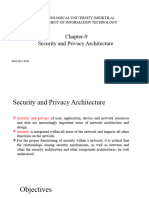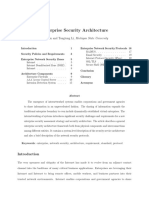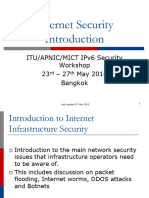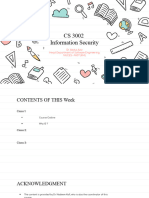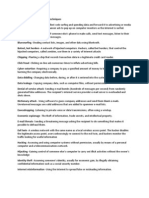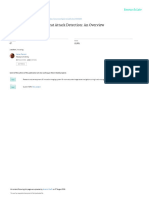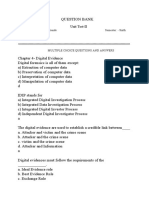0% found this document useful (0 votes)
89 views77 pagesINE Secure Architecture Design Course File
The document outlines principles and techniques for designing secure architecture, emphasizing the importance of secure infrastructure, threat modeling, and various security frameworks. Key concepts include the CIA triad (Confidentiality, Integrity, Availability), Zero Trust, and Defense in Depth, along with methods for authentication, authorization, and minimizing attack surfaces. It also discusses the significance of documentation, asset management, and secure defaults in maintaining a robust security posture.
Uploaded by
clovis sakalaCopyright
© © All Rights Reserved
We take content rights seriously. If you suspect this is your content, claim it here.
Available Formats
Download as PDF, TXT or read online on Scribd
0% found this document useful (0 votes)
89 views77 pagesINE Secure Architecture Design Course File
The document outlines principles and techniques for designing secure architecture, emphasizing the importance of secure infrastructure, threat modeling, and various security frameworks. Key concepts include the CIA triad (Confidentiality, Integrity, Availability), Zero Trust, and Defense in Depth, along with methods for authentication, authorization, and minimizing attack surfaces. It also discusses the significance of documentation, asset management, and secure defaults in maintaining a robust security posture.
Uploaded by
clovis sakalaCopyright
© © All Rights Reserved
We take content rights seriously. If you suspect this is your content, claim it here.
Available Formats
Download as PDF, TXT or read online on Scribd
/ 77























